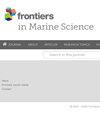Assessing survey design changes of long-term fishery-independent groundfish trawl surveys in the Gulf of Mexico
IF 2.8
2区 生物学
Q1 MARINE & FRESHWATER BIOLOGY
引用次数: 0
Abstract
Long-term fishery-independent surveys provide a wealth of information on fisheries stocks that inform stock assessments. One of the strengths of these surveys is that the design and methods are consistent through time. However, maintaining an unchanged time series can pose several potential issues as management needs change resulting in the need to alter either the survey design or its spatial extent. In the United States Gulf of Mexico, bottom trawl surveys targeting groundfish and shrimp (hereafter, groundfish surveys) have been conducted since the 1950s, with standardized surveys beginning in 1972. The resulting data can provide a great deal of information on commercially and recreationally important species. However, many of the alterations to the survey design have been buried in gray literature or otherwise poorly noted. The history of these surveys is discussed, along with the rationale behind these changes and the impacts they had on stock assessments in the region. Starting in 1981, the Southeast Area Monitoring and Assessment Program began groundfish surveys, continuing the time series. Over time, the survey’s spatial extent and design have been altered to meet changing management needs. Delta-lognormal models are used to draw inferences concerning the effects of the survey design change on the relative abundance and their associated coefficients of variation for several commercially and recreationally important species. The expansion of the surveys across the Gulf of Mexico is examined in relation to stock assessments. Overall, the design changes and spatial expansion have been beneficial from a stock assessment standpoint, resulting in an increase in the number of indices used for single-species stock assessments and the utility of survey data in support of ecosystem modeling efforts. Finally, a discussion around the lesson learned (i.e., the critical need for overlap of survey designs), emphasizing the potential impacts of these changes on the overall time series concerning stock assessments, is presented.求助全文
约1分钟内获得全文
求助全文
来源期刊

Frontiers in Marine Science
Agricultural and Biological Sciences-Aquatic Science
CiteScore
5.10
自引率
16.20%
发文量
2443
审稿时长
14 weeks
期刊介绍:
Frontiers in Marine Science publishes rigorously peer-reviewed research that advances our understanding of all aspects of the environment, biology, ecosystem functioning and human interactions with the oceans. Field Chief Editor Carlos M. Duarte at King Abdullah University of Science and Technology Thuwal is supported by an outstanding Editorial Board of international researchers. This multidisciplinary open-access journal is at the forefront of disseminating and communicating scientific knowledge and impactful discoveries to researchers, academics, policy makers and the public worldwide.
With the human population predicted to reach 9 billion people by 2050, it is clear that traditional land resources will not suffice to meet the demand for food or energy, required to support high-quality livelihoods. As a result, the oceans are emerging as a source of untapped assets, with new innovative industries, such as aquaculture, marine biotechnology, marine energy and deep-sea mining growing rapidly under a new era characterized by rapid growth of a blue, ocean-based economy. The sustainability of the blue economy is closely dependent on our knowledge about how to mitigate the impacts of the multiple pressures on the ocean ecosystem associated with the increased scale and diversification of industry operations in the ocean and global human pressures on the environment. Therefore, Frontiers in Marine Science particularly welcomes the communication of research outcomes addressing ocean-based solutions for the emerging challenges, including improved forecasting and observational capacities, understanding biodiversity and ecosystem problems, locally and globally, effective management strategies to maintain ocean health, and an improved capacity to sustainably derive resources from the oceans.
 求助内容:
求助内容: 应助结果提醒方式:
应助结果提醒方式:


